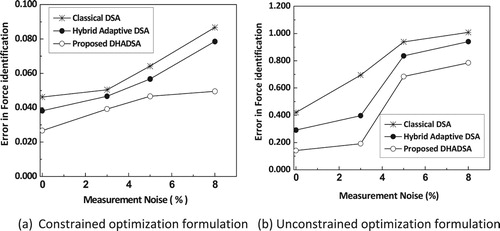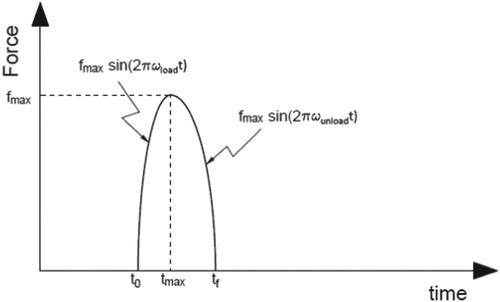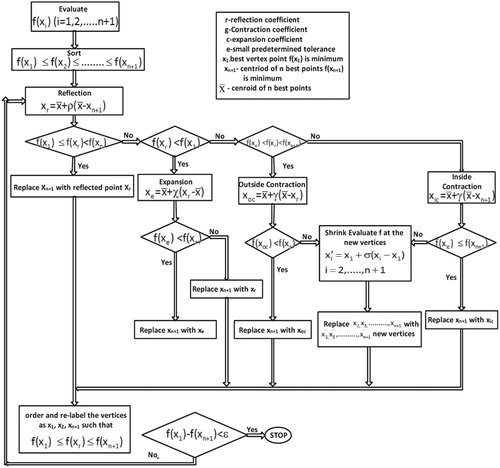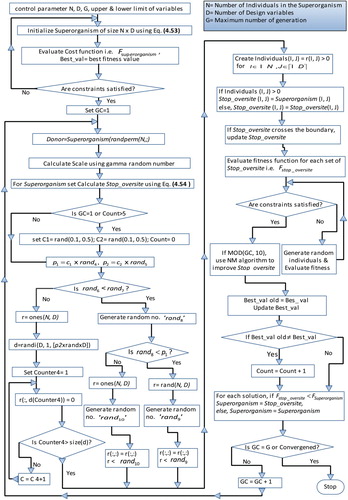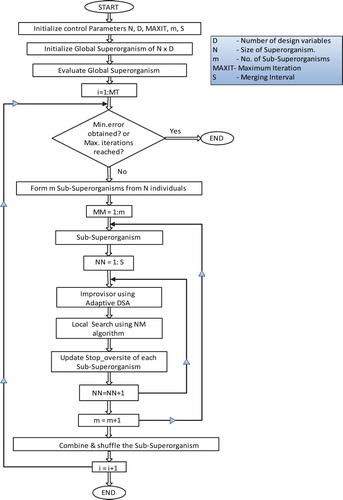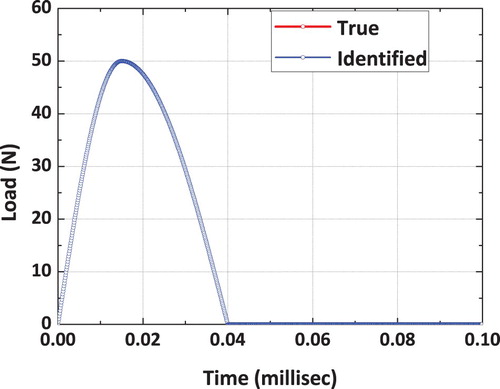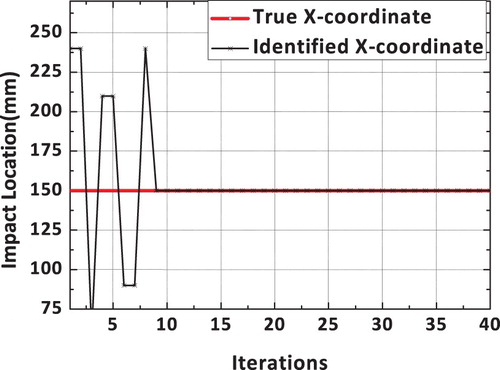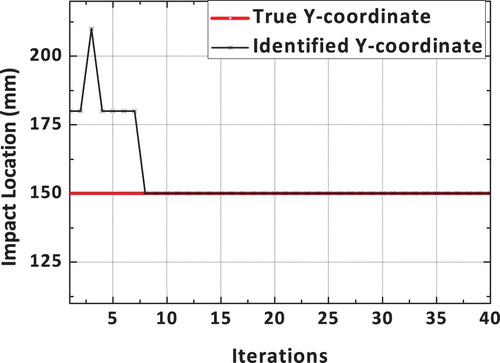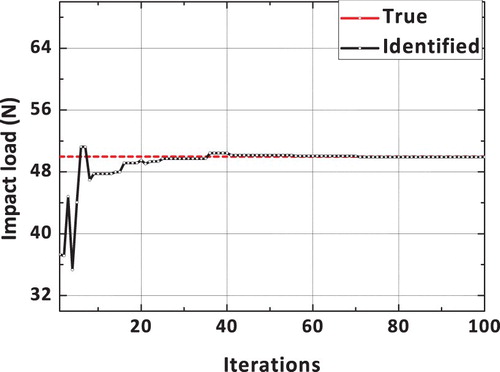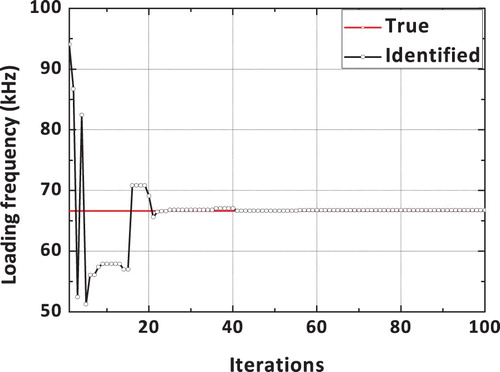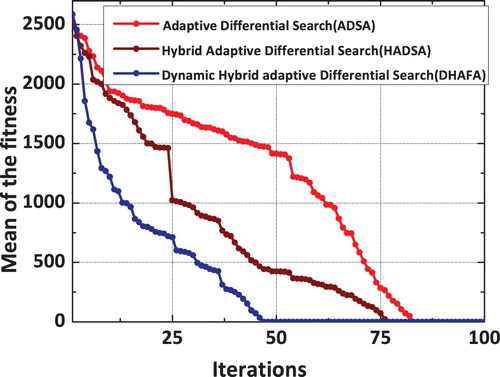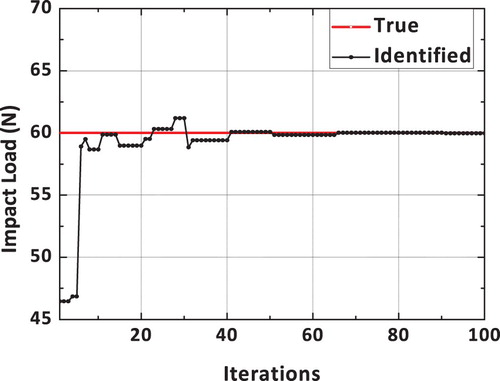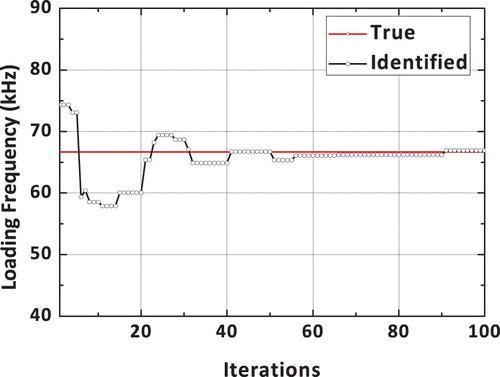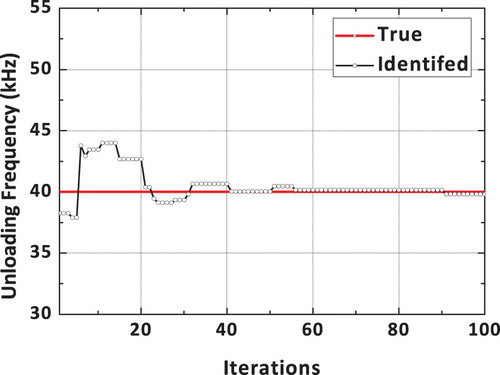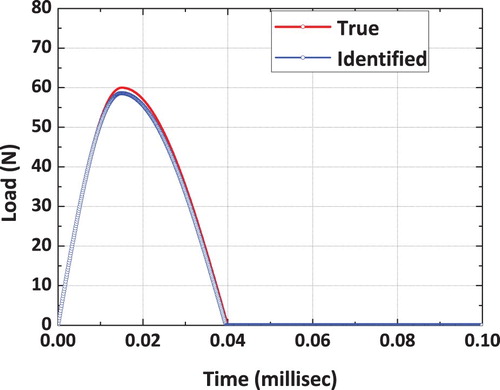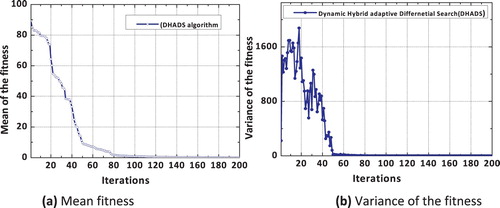Figures & data
Table 1. Properties of Lamina [Citation22].
Figure 13. Percentage error in the reconstruction of impact load on a simply supported composite plate using DHADS algorithm.
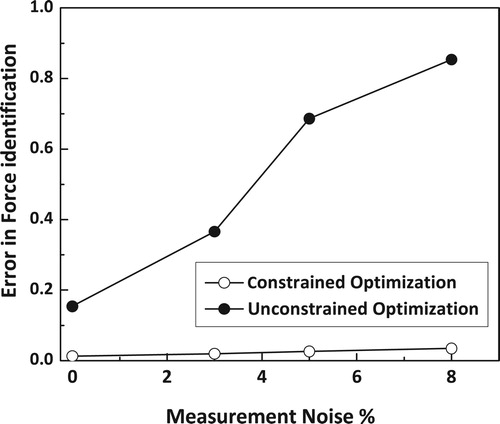
Figure 16. Convergence plot related to the spatial location of the impact load-simply supported beam.
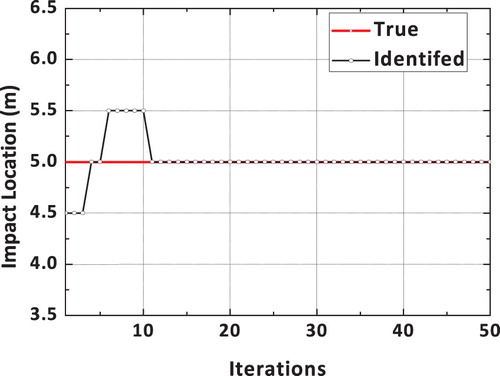
Figure 20. Convergence characteristics of the various differential search implementations- Simply supported beam.
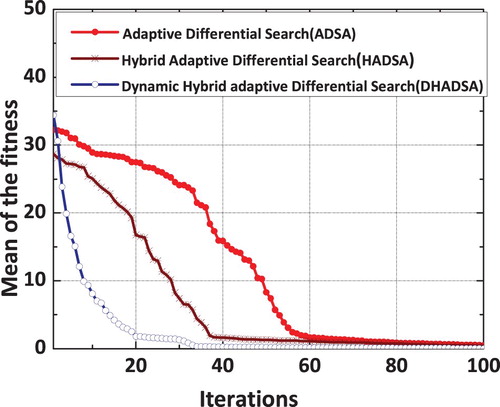
Figure 21. Percentage error in the reconstruction of impact load on simply supported beam using DHADS algorithm.
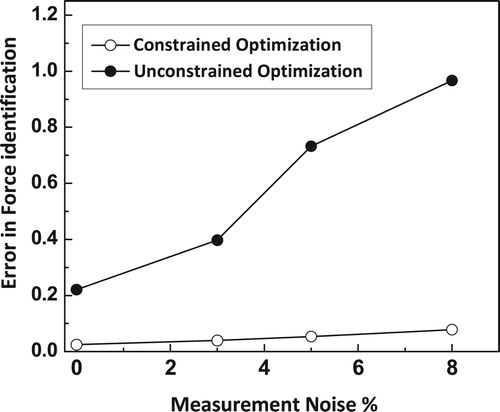
Figure 22. Percentage average error in the reconstruction of the three impact loads on a simply supported beam using the proposed DHADS algorithm.
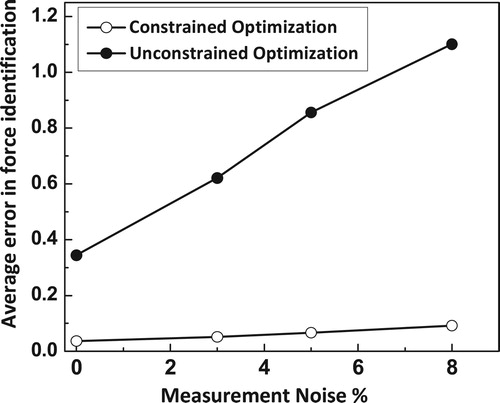
Table 2. True and converged stiffness parameters of the simply supported beam using DHADS algorithm with constrained optimization formulations.
Figure 25. Error in the identification of stiffness parameters of the simply supported beam and with varied noise values using the variants of differential search implementations using constrained optimization formulations.

Figure 26. Error in the identification of stiffness parameters of the simply supported beam and with varied noise values using the variants of differential search implementations using unconstrained optimization formulations.
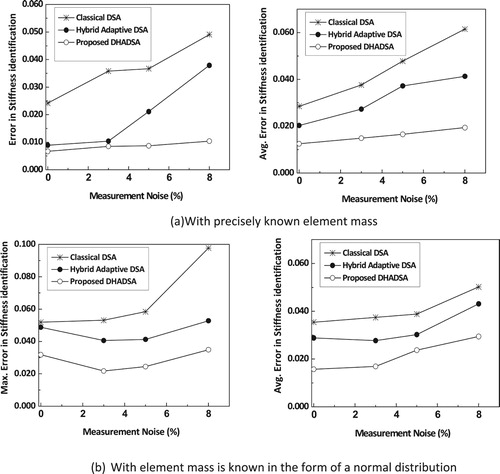
Figure 27. Error in the reconstruction of impact load on simply supported beam using with varied noise values using the variants of differential search implementations with simultaneous identification of system parameters using limited instrumentation using constrained and unconstrained optimization formulations.
